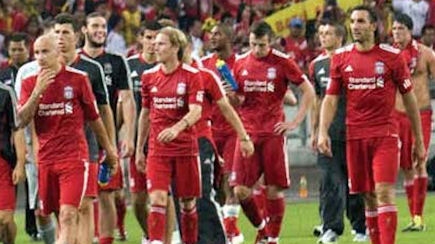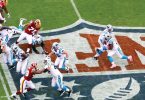This article first appeared in the Sep/Oct 2011 issue of World Gaming magazine.
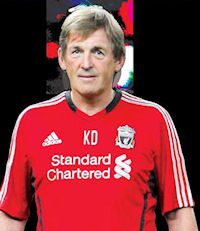
Kenny Dalglish
Since Kenny Dalglish’s re-appointment as manager, Liverpool has invested more than £100 million on new players. The nightmare that lingered in Anfield during the Roy Hodgson era has long gone. Quiet for the last two English Premier League seasons, the new Liverpool has high expectations for the 2011/12 season.
This summer Liverpool visited mainland China for the first time in its history. During the short Guangzhou tour, Chinese football fans warmly welcomed the Red Army. Liverpool’s popularity far exceeded Chelsea‘s on their 2008 Guangzhou tour. Why? An examination of the league tables over the last two seasons shows Liverpool standings can’t explain its huge fan base. In the 2010/11 season, the Reds finished in sixth place behind Tottenham Hotspur and narrowly missed qualification for the UEFA Europa League. The season before they couldn’t even outdo Aston Villa, managing a modest seventh place. It was horrible to watch them play in the Champions League. They were all over the place in their games against Lyon and Fiorentina. After making the final in 2005 and 2007, Liverpool saw themselves unceremoniously booted in the group stage.
In the Premier league era, Manchester United has long ago claimed Liverpool’s former glory. The Red Devils won their 19th title victory last season, surpassing Liverpool’s previous record of 18 championships. Alex Ferguson achieved his words when he took over the Old Trafford post, claiming his aim for United was “knocking Liverpool off their fucking perch”. The River Mersey dynasty founded by Bill Shankly has been fading away, but the rich tradition of the Red Army still attracts thousands of football fans.
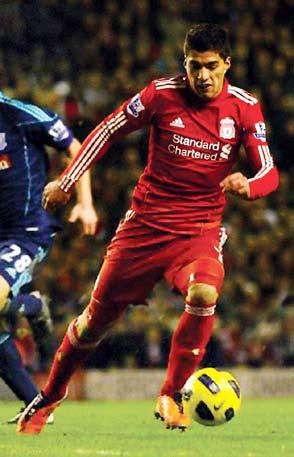
Luis Suarez
Stand at the Albert dock of Liverpool and listen to the howl of the cold wind from the Irish Sea, and you’ll soon understand this is not a place for soft characters. Fernando Moreientes, the highly rated former Real Madrid forward brought to Liverpool by Rafa Benitez couldn’t prove himself here, because the Spaniard was only able to flourish in the warm and sunny Southern European city. It’s not difficult to explain why it took a Scottish manager like Shankly to build Liverpool’s most successful outfit. Shankly, who once drove a tank in World War II, became Liverpool’s manager in the 1960s, inheriting a second division club on the slide. Standing in the crumbling stadium and looking around, he saw a pitch with hardly any grass turf and full of small stones. There was only one main tap in the stadium, and no hot water in the dressing room.
The great Scottish manager’s strong character became the most pivotal point of Liverpool’s revival. Shankly had the reserve players line up across the pitch and cover it inch by inch, picking out all the stones and rocks along the way. He trimmed the turf, making it more suitable to play technical football. In the dark of night he and his assistant Bob Paisley painted the changing rooms and the stands. Hot water was installed so the players could have a steaming hot shower after the matches, so important during the freezing Liverpool winters. It was Shankly who chose the colour that would forever become associated with the club, as he felt playing in the colour of fire would benefit the players mentally. He also hung the iconic “This is Anfield” sign in the player’s tunnel. Its aim was to hammer home to the opposition exactly where they were playing.
Shankly and Paisley were the architects behind creating the most feared club in England for the next 30 years. In Europe, the Red Army became the symbol of English football. Staff discussed tactics in what became known as the ‘Boot Room’ during that time, and the culture of the boot room became known to the world. After the retirement of both managers, Joe Fagan, the third successor of the Boot Room took over the club. It was under his management that Liverpool experienced the event that changed the entire landscape of English football forever.
In the 1985 Champion’s League final held in Heysel, two sets of fans from Liverpool and Juventus openly fought on a stand. The overcrowding caused the collapse of one side of the stand, leading to the death of 39 Italian fans. Liverpool was the scapegoat, resulting in a five-year ban from Europe for all English football clubs. For Liverpool itself, the ban was seven years, almost a generation in football. The English football hooligan had become such a problem that the FA was forced to completely review its management of the game.
As a player who was at Heysel that fateful day, Kenny Dalglish was familiar with the horrible disaster first-hand. He soon became Fagan’s successor, and the shy Glaswegian started the new season knowing any European ambitions for the next seven years were pointless, no matter how successful Liverpool proved itself on the pitch. Despite this dark cloud hanging over the club Dalglish, a Scotsman like Billy Shankly, still achieved title and FA Cup victories before disaster struck again, this time even more catastrophically. In April 1989 some 96 Liverpool fans left home for Hillsborough to cheer on their beloved Reds in the FA Cup, and never returned. The tragedy was attributed to multiple causes such as a failure of police control and crumbling stands that didn’t comply with FA standards. The Young Dalglish attended 96 funerals and visited hundreds of injured fans in hospital. The extreme trauma and huge weight on the shy Scotsman’s shoulders made him sleepless at night, and a mysterious rash appeared on his body. He decided he could take no more, and left the game indefinitely. The news of his resignation shocked the whole world, and it was more than two decades before he finally returned to the game. The Hillsborough disaster was a major turning point for the Liverpool football club. The Reds never managed to return to their former glory.
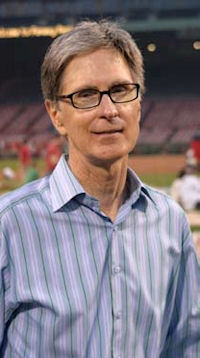
John Henry Photo: Webjedi
King Kenny, the final successor of the Boot Room, returned to Anfield after 22 years in the wilderness. He took over the manager’s post from Roy Hodgson to save the downward club. Dalglish was shown complete faith by his new boss, John Henry, who invested more than £100 million in this year’s winter and summer transfer windows. In January Dalglish successfully regrouped the forward line using the £50 million from the sale of Fernando Torres to acquire the signatures of Andy Carroll and Luis Suarez. Over the English summer the major focus has been to rebuild the midfield. Charlie Adam, Jordon Henderson and Stewart Downing represent an investment of more than £50 million. Their role is to enhance Liverpool’s attack in the new season.
What did Kenny Dalglish miss in those 22 years? For one thing he missed the modernisation of the club brought about by Frenchman Gérard Houllier, and for another he missed the so-called “Miracle of Istanbul” created by Englishmen Steven Gerrard and Jamie Carragher and more importantly their foreign teammates such as Didier Hamann and Xabi Alonso. However Dalglish doesn’t rely as much on talented players from Latin America or South Europe. His theory of utilising local players is patently obvious. Among the £100 million in new investments, only one player comes from abroad, Uruguayan striker Luis Suarez. £35 million Andy Carroll is from Newcastle United, Jordan Henderson was the product of Sunderland academy and Stewart Downing came through the Middlesbrough youth system. These three culturally similar cities are in the north of England very close to Scotland, and new recruit Charlie Adam used to play for Glasgow Rangers in Scotland.
King Kenny’s recent transfer activities demonstrates his preference for players from the North of England, who are accustomed to the long, cold and sometimes depressing Liverpool winters. Over the last 50 years from Bill Shankly to Kenny Dalglish, Liverpool has shown its prominent Scottish genes. This is the second reign of King Kenny, and after the £100 million spending spree, the club is now finally ready to relive past glories.

